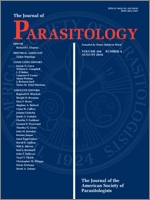Human babesiosis is a tick-borne protozoal disease of increasing clinical significance in North America. Most cases in the eastern and Midwestern regions of the United States are reportedly due to Babesia microti infections. By contrast, most human infections reported in California and Washington have been attributed to a new species that was first identified in 1991 and subsequently named Babesia duncani. Although the tick vector and mammalian reservoir hosts for B. microti are well characterized, the vector and reservoir hosts for B. duncani are unknown. As a result, specific risk factors for human infections cannot be characterized. Identification of potential hosts and vector species has been hampered by the lack of specific and sensitive molecular diagnostic tools to amplify parasite DNA. To address this need, a nested PCR assay targeting the β-tubulin gene, a well-conserved locus in piroplasm parasites with a highly variable intron region among species, was developed. The assay was evaluated by spiking tick and mammalian DNA extracts with DNA from a B. duncani isolate derived from a human patient (WA-1) as well as related Babesia spp. from Californian wildlife. This assay was highly specific, with a sensitivity of approximately 1 copy of template DNA in a background of tick DNA. At this level of detection B. duncani was detectable in larval tick samples, and the target locus allowed for visual differentiation between species by gel electrophoresis. This assay offers researchers a new tool for elucidating the natural transmission cycle of B. duncani.
How to translate text using browser tools
1 August 2018
An Improved PCR Protocol For Detection of Babesia duncanI In Wildlife and Vector Samples
K. E. O'Connor,
A. M. Kjemtrup,
P. A. Conrad,
A. Swei
ACCESS THE FULL ARTICLE

Journal of Parasitology
Vol. 104 • No. 4
August 2018
Vol. 104 • No. 4
August 2018




